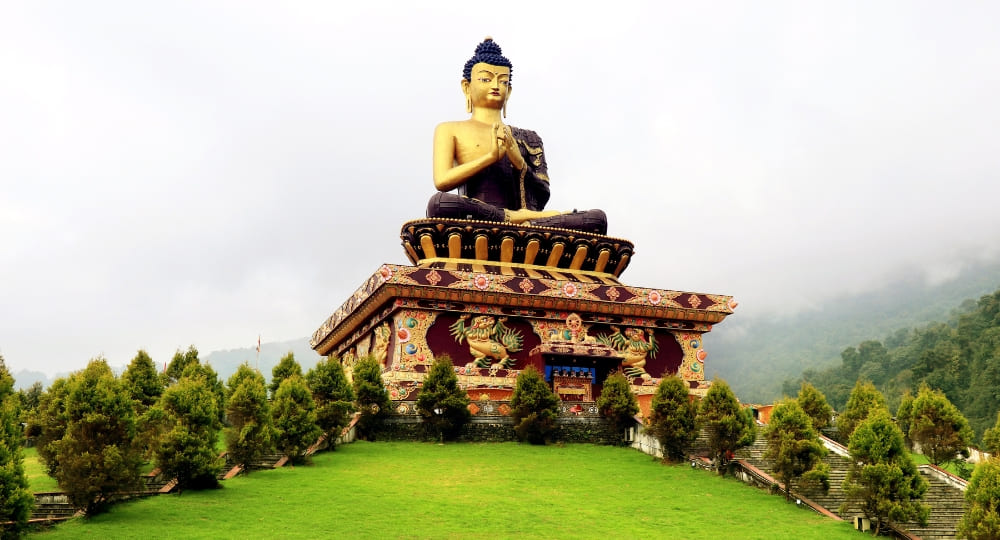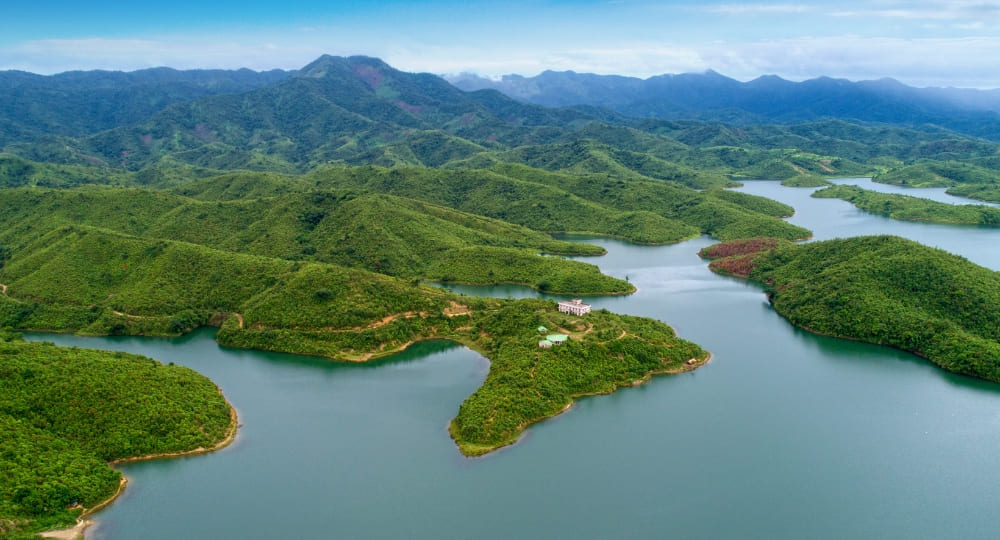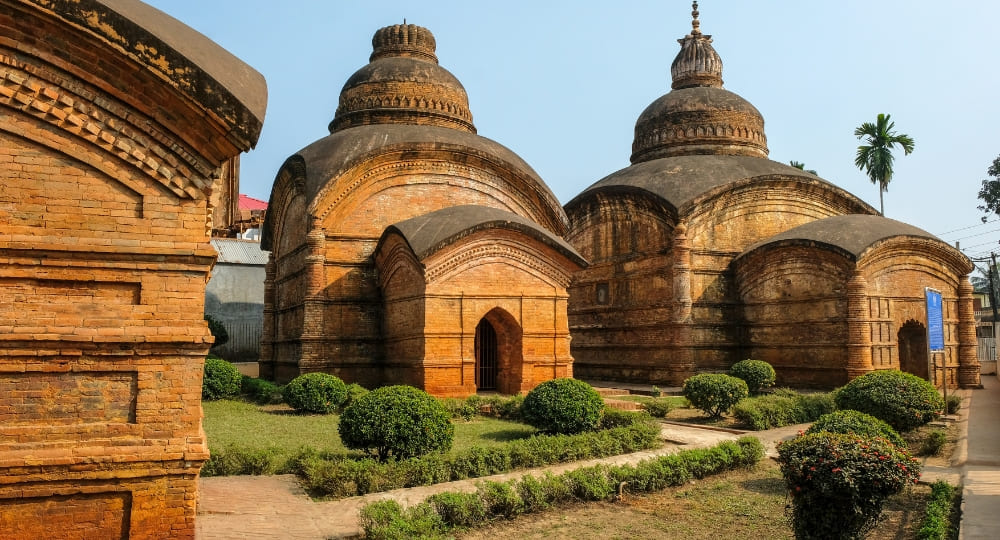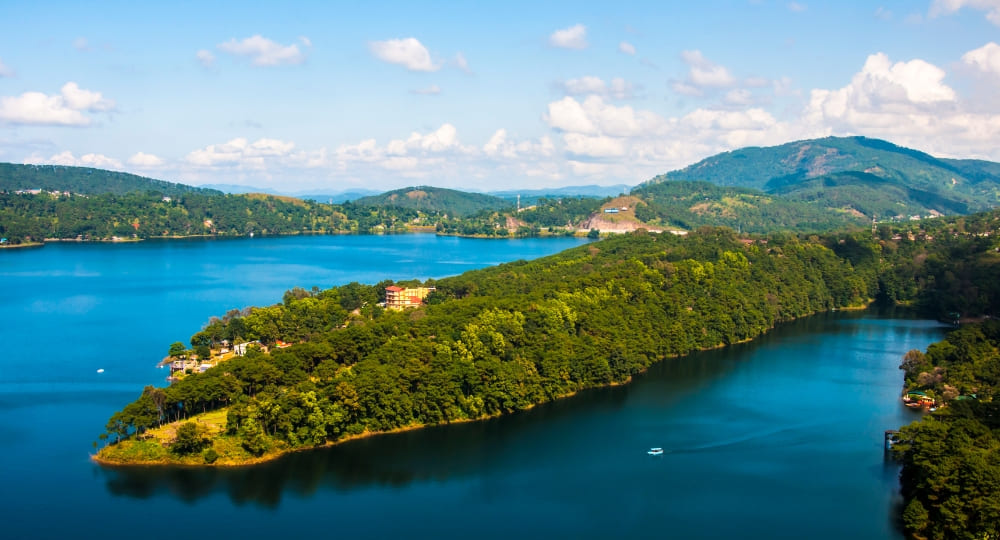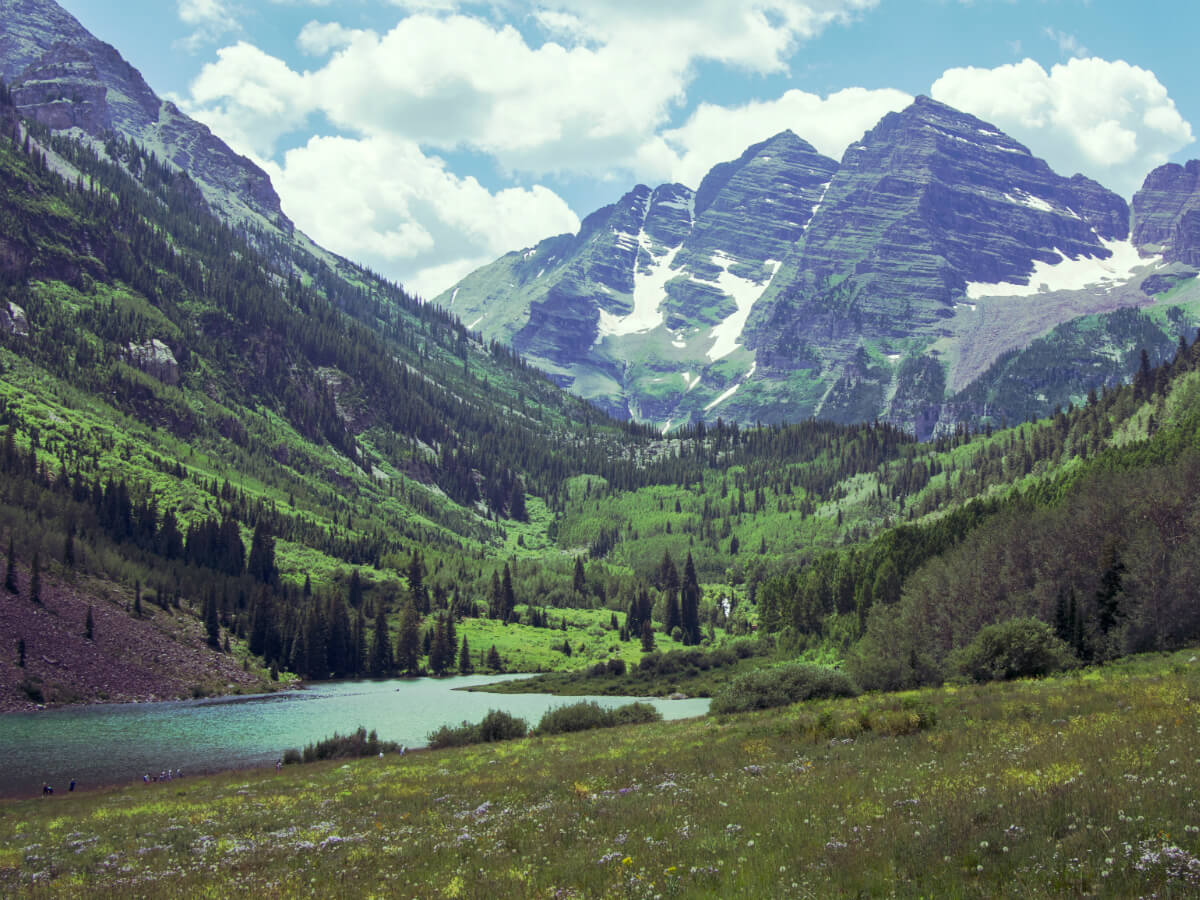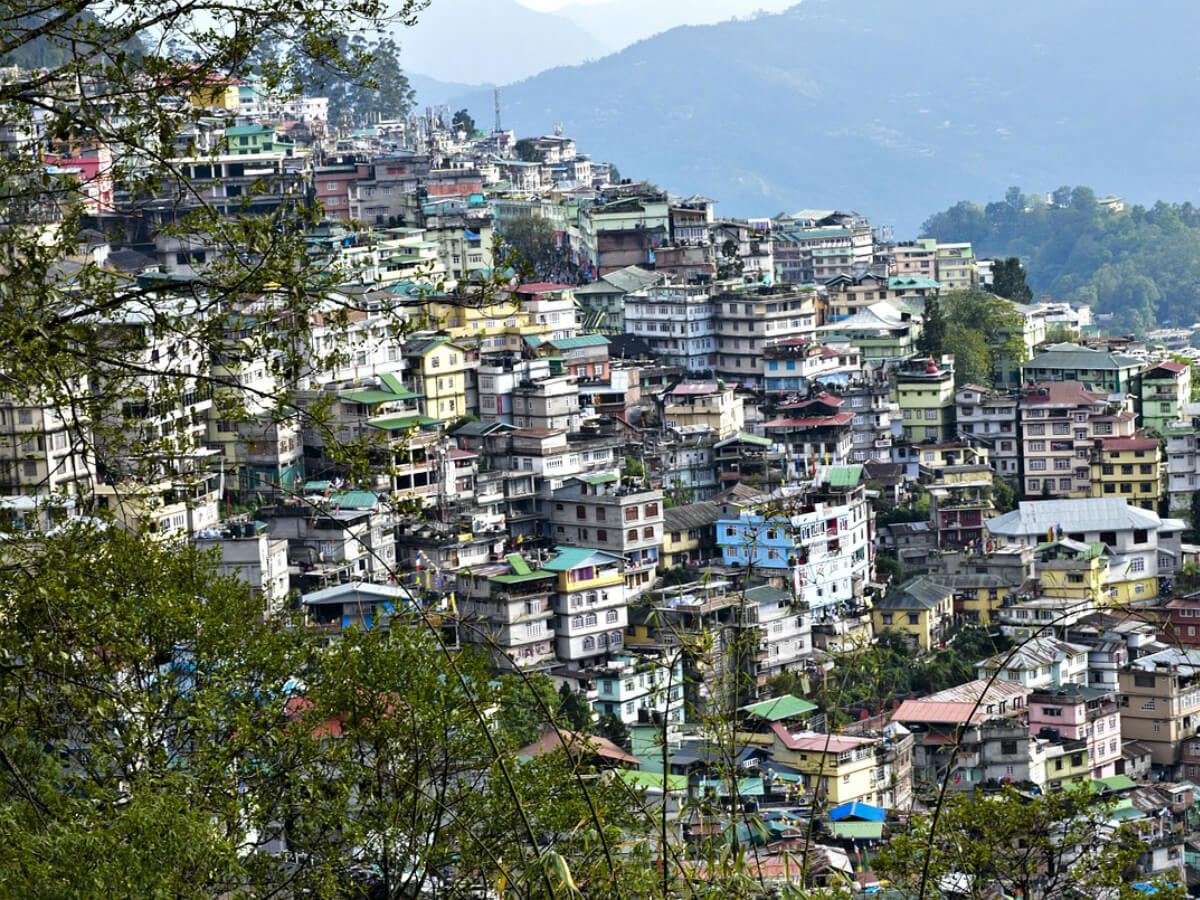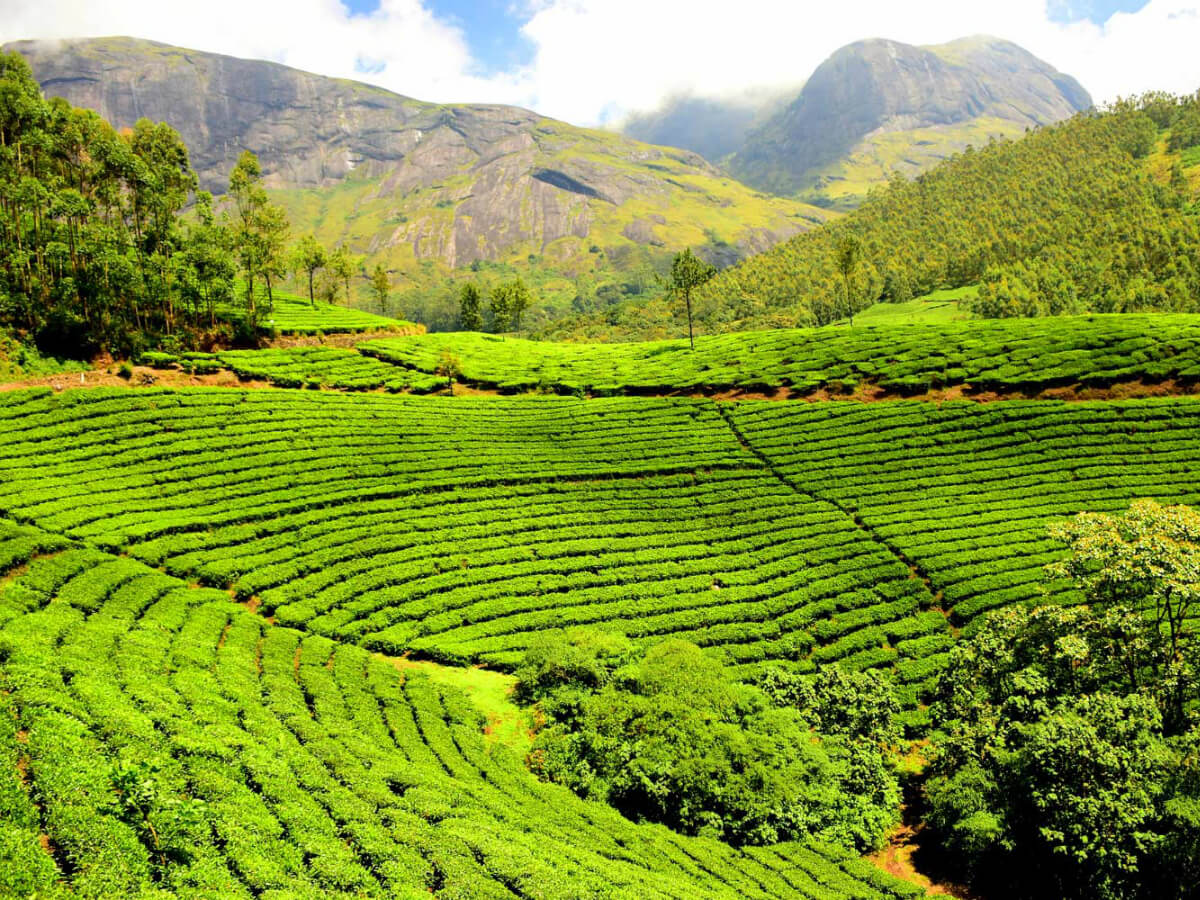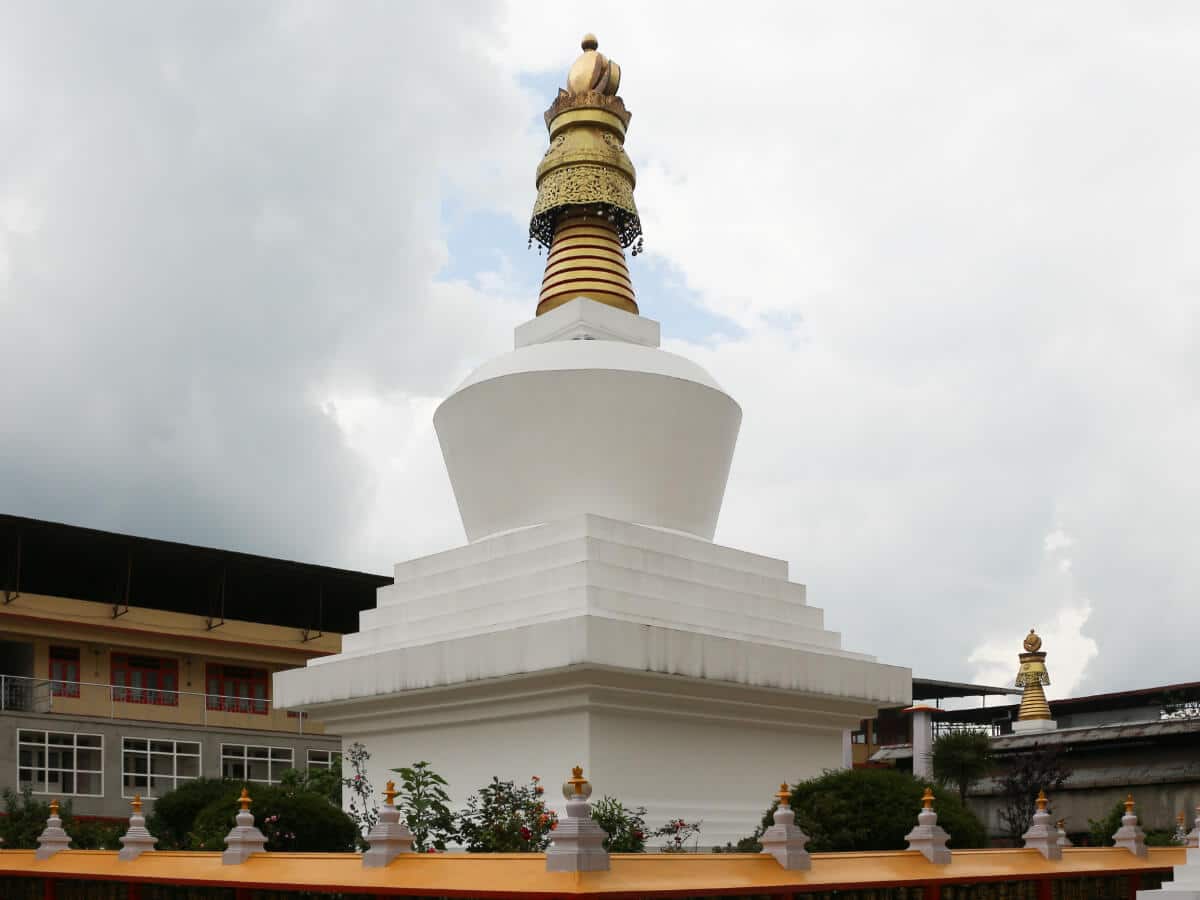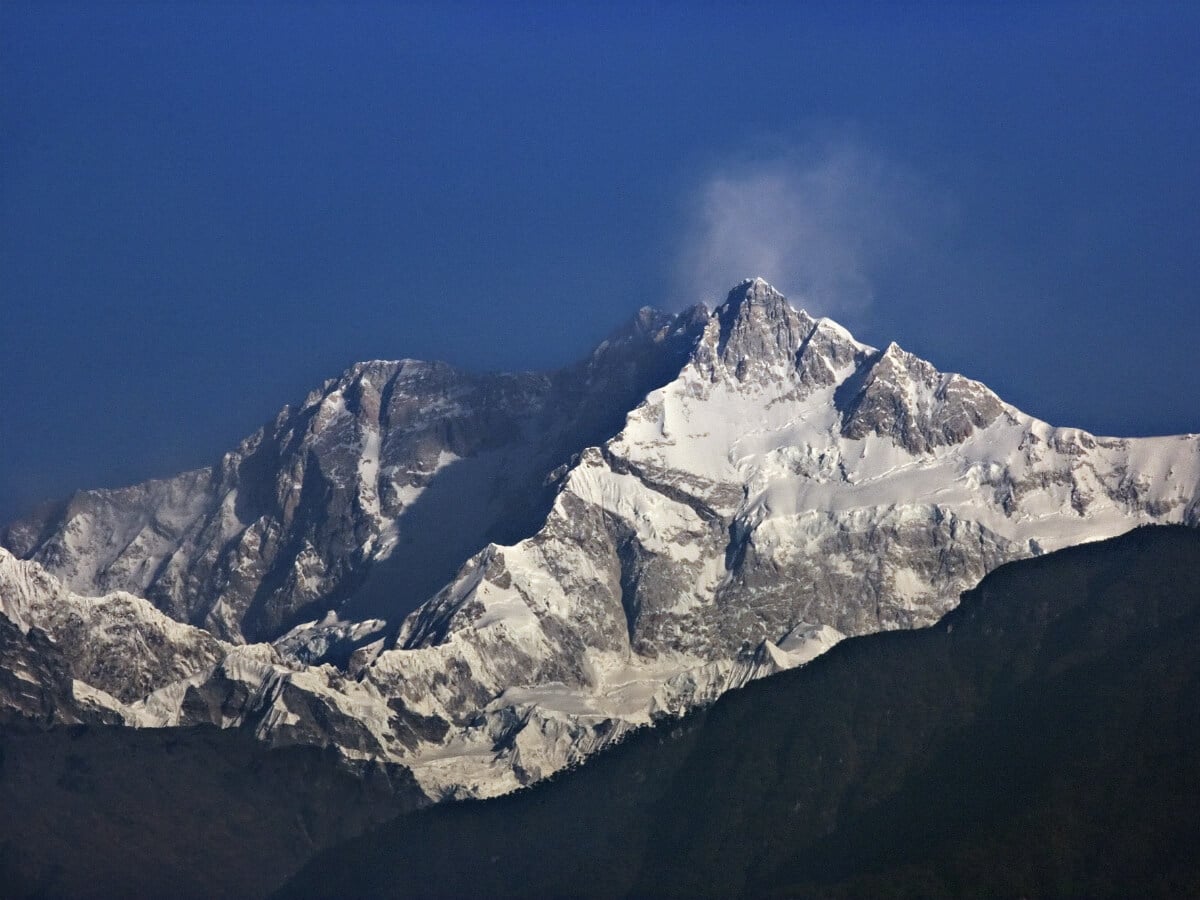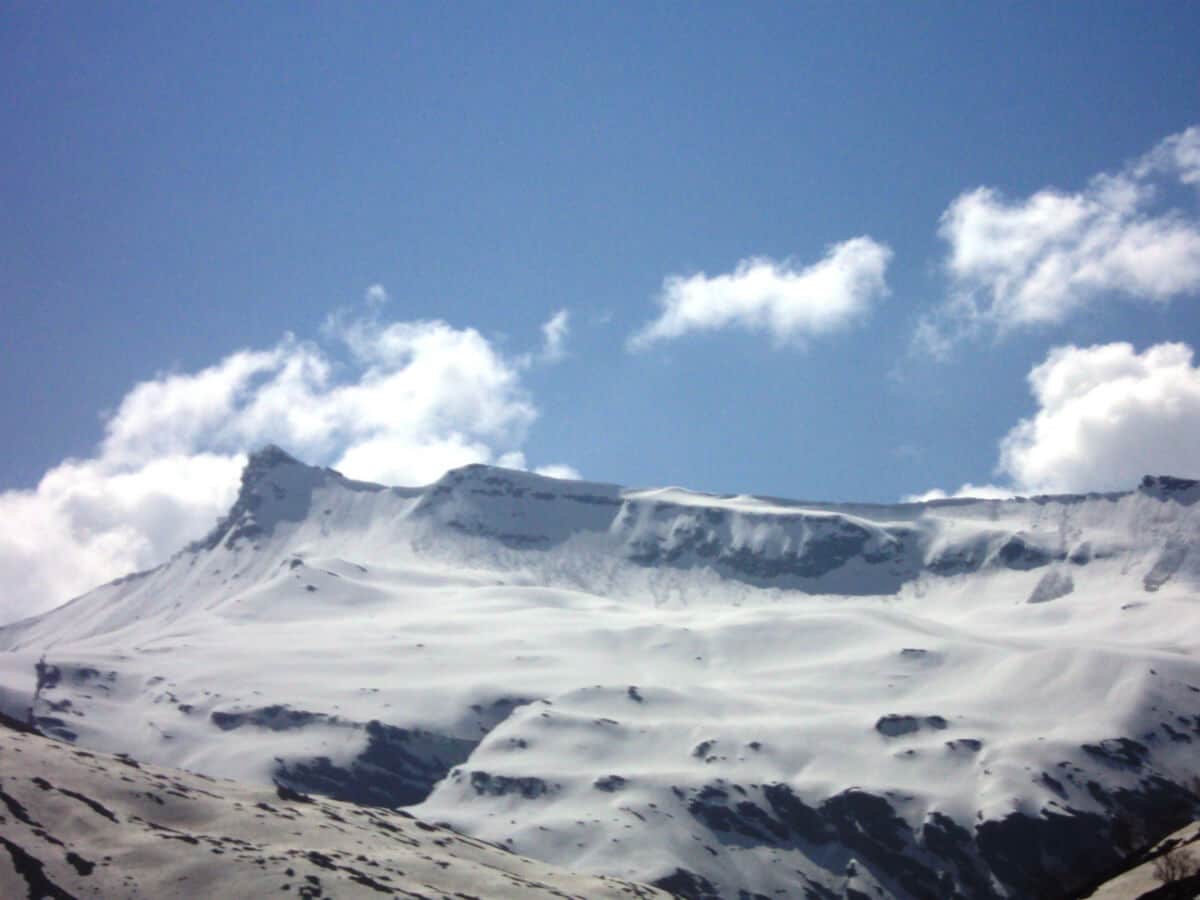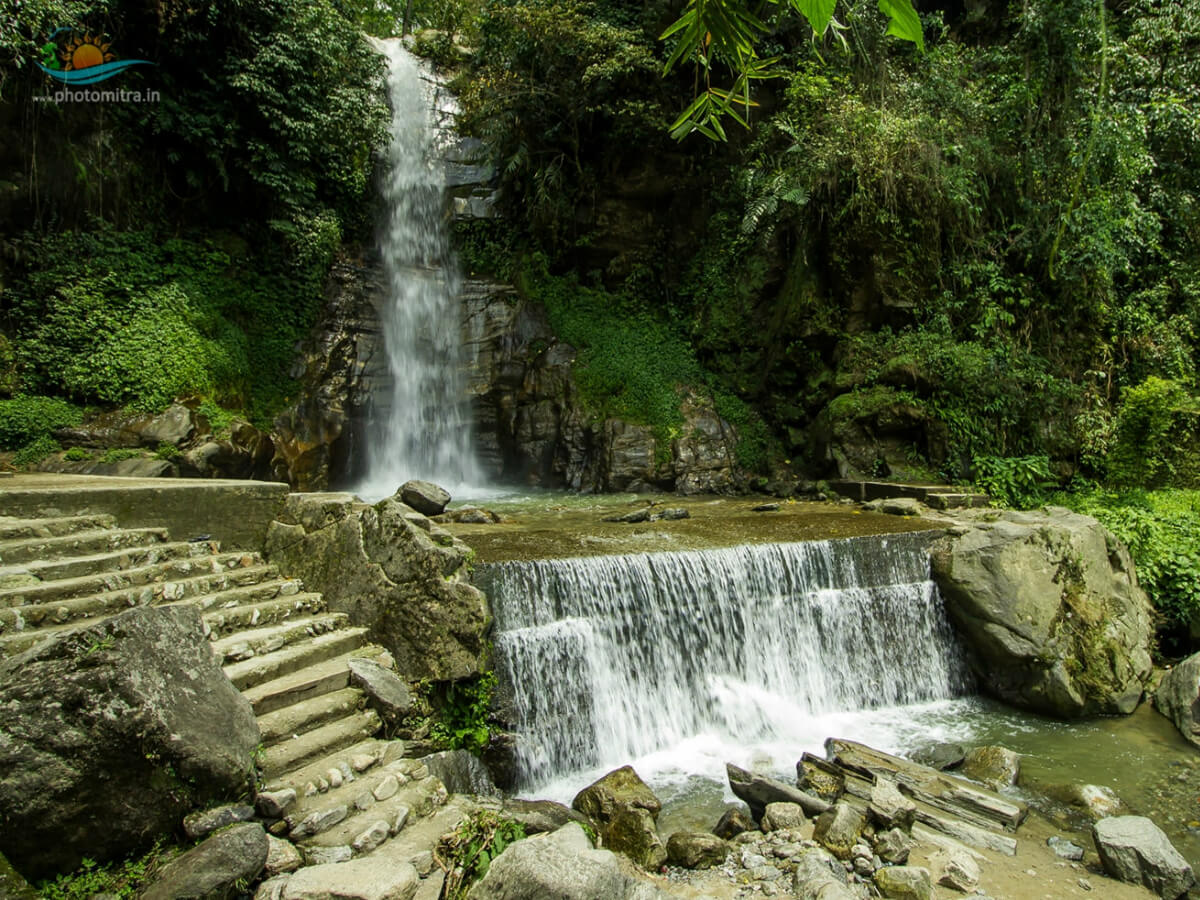Tour Packages
North East Tour Packages
SUPER DEAL PRICE
STARTS FROM
per person on twin sharing

Arunachal, India’s Orchid State, grows 500 orchids.

Largest water palace in India is Neermahal in Tripura.

Kangchenjunga is India’s highest and third worldwide.

Tawang Monastery is India’s largest in Arunachal.

India’s tallest waterfall is Nohkalikai in Meghalaya.
North East - Overview

By Purpose
Couples
For Newlywed Vacations
Family
For Family Vacations
Top Tourist Attractions
Tawang Monastery
Sela Pass
Ziro Valley
Solomon’s Temple
Kamakhya Temple
Tsomgo Lake
Rumtek Monastery
Nathula Pass
Loktak Lake
Kangla Fort
Elephant Falls
Umiam Lake
Ujjayanta Palace
Matabari Temple
Mizoram State Museum
Everything You Need to Know About North East
India truly is a cornucopia of cultures, traditions, languages, and communities. One of the best examples of this combination is the northeastern region of India. Although it still remains relatively underrated and unexplored in terms of tourism, Northeast India has some of the best sites, cuisines, and adventures to offer to tourists worldwide. You can explore all of this and so much more with GT Holidays’ North East tour packages. Let’s take a look at the unique flavour present in the various states, cities, and towns of Northeast India so you can understand why visiting this region of the country is a must at least once in your lifetime.
About Northeast India
About Arunachal Pradesh
Arunachal Pradesh is the remotest state in India. It’s popularly known as ‘the Land of the Dawn-Lit Mountains’ as it’s the first region in the country to witness the sunrise. During the medieval age, various local kingdoms and chieftains ruled the state, several of whom had Tibetan roots. Arunachal Pradesh eventually came under the control of the Ahom kingdom, which set up administrative centres in the region. The British colonial administration became interested in the area in the 19th century, which is when they launched various expeditions in Arunachal Pradesh.
The North-East Frontier Agency (NEFA) was established in 1914 with the purpose of administering the region. Following the country’s independence in 1947, the region became a part of the Indian Union. After the North Eastern Areas (reorganisation) Act of 1971, the Union Territory of Arunachal Pradesh was renamed in 1972.
Despite the fact that half the population of Arunachal Pradesh practices agriculture, only a small portion of the state’s land is under cultivation. Since the late 20th century, there has been a noticeable expansion of settled agriculture. However, the majority of the hill folk engage in shifting agriculture. The major crops that are cultivated using this method are rice, millet, corn, and buckwheat. The primary commercial crops in the state include vegetables, potatoes, sugarcane, ginger, and oilseeds.
About Assam
Assam was a part of the Mauryan Empire in the 3rd century BCE, as per historical records. During the 12th century CE, the Ahom Kingdom began to rule Assam, and this reign continued for almost 600 years. Following the Ahoms, Assam came to be ruled by the Burmese in 1824 CE, and they kept ruling until 1826 CE. After this, Assam came under British rule.
In order to solidify their grip over Assam, the British fought several wars with Myanmar, and this also led them to sign numerous treaties with indigenous rulers. During the 19th century, Assam became one of the major sources of tea for the British. Following the discovery of indigenous tea plants in the wild, the British colonial administration started commercial tea production in the region. Ever since the post-independence period, Assam has experienced separatist and ethnic violence. However, a certain semblance of peace and stability has prevailed in Assam in the last couple of years.
Agriculture is the backbone of the economy of Assam. The central agricultural products in the state are tea, rice, tobacco, jute, timber, and oilseeds. Some of the other crops cultivated in Assam are corn, sugarcane, mustard, potatoes, fruits, and pulses. Tea and oil are two of Assam’s primary industries. When it comes to forestry, the value of sal and other tropical hardwoods is quite high.
About Manipur
The roots of Manipur’s earliest history can be traced back to approximately 900 CE. The slightly more recent history of Manipur is tied to 1762 when Raja Jai Singh of Manipur signed a treaty with the British so as to repel an invasion from Myanmar (Burma). A new government system was established in 1917 when the region was segregated into three subdivisions. Every subdivision was led by an officer from Assam’s government. Manipur officially became a part of India in October 1949 through a merger agreement signed by the then Maharaja of Manipur and the Government of India. Under the States Reorganisation Act of 1956, Manipur became a union territory. It was granted full-fledged statehood in January 1972.
The two primary sources of income in Manipur are agriculture and forestry. The main crop grown in the state is rice. Due to the rich soil of Manipur, there is a plethora of crops cultivated in the state, including corn, pulses, mustard, orchard fruits, sugarcane, and tobacco.
About Meghalaya
Meghalaya was declared an autonomous state within India in April 1970. It was previously a part of the composite state of Assam. When Jawaharlal Nehru was the Prime Minister of India, he came up with a policy that would protect and preserve the way of life of the tribal communities. This meant that the region of Meghalaya, too, was granted special protection in the Indian constitution. Even though it was a part of Assam back then, it still experienced autonomy. However, when Assamese was announced as the official language of the region in 1960, there was a lot of emphasis placed on self-rule and autonomy. The movement remained mostly constitutional and peaceful, contrary to the political situation in the other hilly northeastern areas of the country. This is what led to Meghalaya becoming an autonomous state and eventually achieving full-fledged statehood in January 1972.
The central economic lifeline of Meghalaya is agriculture. Some of the primary crops cultivated in Meghalaya include millet, rice, potatoes, ginger, cotton, chillies, fruits, betel nuts, corn, vegetables, and jute. Many of the state’s natural resources still remain untapped and unexplored. This includes limestone, coal, mica, quartz, gypsum, and also other minerals. It’s said that Meghalaya has the world’s best sillimanite deposits. The state is also responsible for almost all the sillimanite produced in India.
About Mizoram
In 1826, Assam was annexed by the British under the Treaty of Yandabo. Prior to this treaty, the tribal communities of Mizoram remained mostly unaffected by the influence of international politics. The region of Mizoram came under the control of the British by the 1870s. The British administration in India introduced the Inner Line Regulation or the Bengal Eastern Frontier Regulation of 1873. Due to this, people weren’t allowed to move from the plains to the hills without a special permit. The British did not formally annex the region of Mizoram till the early 1890s. Following India’s independence in 1947, Mizoram continued to remain a part of Assam. In 1987, Mizoram achieved statehood.
Mizoram’s main economic practice is agriculture. During the early 21st century, over two-thirds of the workforce was engaged in agricultural activities. There are two kinds of agriculture practised in Mizoram, namely terrace cultivation and shifting agriculture. The primary crops cultivated in the state are corn, rice, vegetables, and cotton.
About Nagaland
The Naga territory was a part of Assam initially after the country’s independence in 1947. There was a call for the political union of the Naga tribes, which resulted in a nationalist movement. The extremist groups in Nagaland wanted independence from the Indian Union. These demands led to a lot of violence in the region, and the Indian army had to intervene to bring in some order. Eventually, in 1957, the Indian government and the Naga leaders came to an agreement. Due to this agreement, the Tuensang Frontier Division and the Naga Hills region of Assam became a single administrative unit called the Naga Hills Tuensang Area (NHTA).
In July 1960, the Indian government and the Naga People’s Convention (NPC) had an agreement for Nagaland to become a constituent state of the Indian Union. In 1963, Nagaland was granted statehood. Most of the state’s population is employed in agriculture. Some of the main crops grown in Nagaland are rice, pulses, potatoes, sugarcane, small millets, corn, tobacco, and oilseeds.
About Tripura
In 1765, when the British East India Company obtained Bengal’s financial administration, the British gained control of Tripura. Due to the Partition of Bengal, the region of Tripura was incorporated into the newly formed province of Eastern Bengal and Assam. Back then, it was known as Hill Tippera. In October 1949, Tripura officially became a part of the country. It was given the designation of a union territory in September 1956. In 1972, Tripura achieved statehood.
A majority of Tripura’s population is employed in the agricultural sector. The primary crop grown in the state is rice. Other agricultural products that are grown to be sold include sugarcane, potatoes, tea, cotton, jute, mangoes, oranges, pineapples, coconut, and jackfruit. The manufacturing sector of Tripura includes several small-scale and cottage industries. Some of the most vital ones are pottery, basketry, carpentry, and weaving.
About Sikkim
Political parties were established in Sikkim for the first time following India’s liberation from the British in 1947. They aimed for many things that had been resisted by the chogyal (spiritual and temporal king) and his followers. However, their resistance didn’t ultimately last. The newly formed political parties aimed for Sikkim’s accession to India. They also wanted to eradicate feudalism and form a popularly elected government. Sikkim officially became an Indian state in May 1975.
More than half of Sikkim’s population is employed in the field of agriculture, which is the primary financial sector of the state. In the terraced fields of Sikkim, the major crops cultivated are rice, corn, wheat, buckwheat, and barley. Some of the other things grown in Sikkim include tea, fruits, vegetables, potatoes, ginger, and beans. Sikkim also happens to be one of the leading producers of cardamom in the world. The farmers of the state are known to raise poultry, goats, sheep, pigs, and cattle. Up until the early 1970s, the industries in Sikkim were mainly centred around cottage industries and traditional handicrafts. This included blankets, carpets, scroll paintings, embroidery, and handwoven textiles. Other small-scale industries have been established in Sikkim since then, such as watches, processed foods, and smaller electronic components.
Tidbits
- Arunachal Pradesh is known as the ‘Land of the Rising Sun’ because it’s the state that sees the first sunrise in India.
- Northeast India is home to the country’s ‘orchid state’, which is Arunachal Pradesh, as it has over 500 varieties of orchids.
- The largest state in Northeast India is Arunachal Pradesh.
- Northeast India has the largest monastery in India, which is called the Tawang Monastery.
- The state of Arunachal Pradesh in Northeast India has the lowest population density of any state in the country.
- The state of Assam in Northeast India has its own anthem, named ‘O Mur Apunar Desh’, which was written by Lakshminath Bezbarua.
- Northeast India has the largest dry fish market in Asia, which is the Jagiroad Dry Fish Market in Assam.
- The region has a city named Jorhat in Assam, which is called ‘the tea capital of the world’.
- Majuli, which is the world’s largest river island, is in Northeast India.
- Northeast India houses the state of Assam, which is the largest tea-growing area in the world and produces about one-seventh of the world’s tea.
- One of the oldest surviving amphitheatres in Asia, Rang Ghar, is located in Northeast India.
- India’s least populated state (which is Sikkim) is in Northeast India.
- Northeast India has the world’s third-highest peak, Kangchenjunga.
- In 2016, the state of Sikkim in India was awarded the title of the ‘cleanest state’ in India.
- Sikkim is known to produce Dalle Khursani, which is one of the hottest chillies in the world.
- Northeast India is home to India’s first fully organic state, which is Sikkim.
- The region has the world’s only floating national park, which is the Keibul Lamjao National Park in Manipur.
- Northeast India has the oldest polo ground in the world, which is Imphal’s Mapal Kangjeibung.
- The largest freshwater lake in Northeast India is the Loktak Lake in Manipur.
- The Ima Keithel Market in Manipur is known to be the largest women-run market in Asia.
- 70% of the state of Meghalaya is covered in forests.
- The state of Meghalaya in Northeast India is the only one in the country where numerous tribes follow matriarchal customs.
- Shillong, a hill station in Northeast India, is called ‘the Scotland of the East’.
- The Nohkalikai Falls in Meghalaya is India’s highest plunge waterfall.
- In 2025, the state of Mizoram was declared the country’s first fully literate state.
- In 2023, Mizoram was declared as the happiest state in India.
- The Dimapur Airport in Nagaland was built during World War II.
- Tripura is the third smallest state in India by area.
Things to Know Before Visiting Northeast India
- Travelling to the regions of higher altitudes in Northeast India can often cause altitude sickness. Make sure to drink plenty of fluids to avoid dehydration.
- Since several of the areas in the region can get cold and rainy, it’s important to carry warm clothes, rain gear, comfortable footwear, and sun protection in your luggage.
- When visiting the state of Arunachal Pradesh in Northeast India, remember that non-resident individuals are required to obtain an Inner Line Permit (ILP) to explore most of the areas within the state, especially the restricted areas and border regions. This permit is also needed to visit popular areas like Tawang, Itanagar, and Bomdila.
- In some of the sparsely populated areas of Northeast India, tourists may find it difficult to find public transport. Therefore, it’s easier to travel around a private car or professional cab in such areas.
- While visiting a religious site, remember to dress modestly.
- Always ask for permission before taking pictures of monks and religious rituals.
- Stay away from engaging in illegal activities such as wildlife trafficking, unauthorised trekking, or vandalism of any kind.
- Make sure not to litter and try to limit the use of plastic.
- The rural areas of the region may not have a lot of ATMs. Hence, always carry sufficient cash with you, especially if you’re travelling to the markets or remote destinations.
Northeast India At A Glance
| State | Food | Shopping | Popular Places | Best Time to Visit |
| Arunachal Pradesh | Bamboo shoots, momos, lukter, pehak, apong, pika pila | Thangkas, Tibetan carpets, bamboo and cane crafts, traditional jewellery | Tawang Monastery, Sela Pass, Ziro Valley, Namdapha National Park | October to April |
| Assam | Masor tenga, duck meat curry, aloo pitika, khar | Assam tea, Assam silk, Assamese jewellery, bamboo artefacts | Kaziranga National Park, Maa Kamakhya Temple, Umananda Island, Majuli Island | November to April |
| Manipur | Chamthong, ngari, eromba, chak-hao kheer | Wooden items, bamboo artefacts, handwoven shawls, stone-carved utensils | Keibul Lamjao National Park, Kangla Fort, Loktak Lake, Singda Dam | Mid-November to February |
| Meghalaya | Jadoh, pudoh, pumaloi, nakham bitchi | Bamboo and cane handicrafts, shawls, jewellery, traditional garments | Elephant Falls, Umiam Lake, Krang Suri Falls, Mawsmai Cave | November to February |
| Mizoram | Bai, koat pitha, bamboo shoot fry, panch phoran tarkari | Bamboo and cane items, handwoven textiles, traditional garments | Mizoram State Museum, Solomon’s Temple, Aizawl Zoological Park, Dampa Tiger Reserve | October to March |
| Nagaland | Zutho, bamboo shoot, samuthu, akini | Naga jewellery, traditional textiles, traditional handicrafts, bamboo artefacts | Kohima War Cemetery, Kisama Heritage Village, Nagaland State Museum, Khonoma Village | October to May |
| Tripura | Mui borok, kosoi bwtwi, gudok, chakhwi | Cane and bamboo handicrafts, jewellery, handwoven textiles | Ujjayanta Palace, Neermahal, Tripura Sundari Temple, Sepahijala Wildlife Sanctuary | October to February |
| Sikkim | Momos, thukpa, sel roti, gundruk, sha phaley | Sikkim tea, prayer flags, thangkas, Tibetan carpets, jewellery | Hanuman Tok, Ban Jhakri Falls Park, Tsomgo Lake, Nathula Pass | March to May and October to November |
Top Reasons To Choose North East Tour Packages
Here are some of the many wonderful reasons to book our North East tour packages:
Mesmerising Natural Beauty
The natural beauty of Northeast India is truly unmatched. From getting to view the Kangchenjunga in all its glory to breathing in the lush greenery of Ziro Valley, you will never run out of natural sites to explore in this region. The tea gardens of Assam are also a must-visit with our North East tour packages. Be it the lakes and monasteries of Sikkim, the living root bridges of Cherrapunji, or the spellbinding waterfalls of the region, Northeast India has it all.
Mouthwatering Cuisine
Getting to taste the mouthwatering cuisine of Northeast India is definitely one of the best reasons to book GT Holidays’ North East tour packages. From the momos and thukpas of Sikkim to the pithas and fish curries of Assam, the cuisine of Northeast India is delightful in every aspect. Non-vegetarians can try out delicious dishes such as the smoked pork curry from Nagaland, duck meat curry from Assam, jadoh from Meghalaya, and eromba from Manipur. There are also plenty of vegetarian delights to try out, such as Assam’s aloo pitika, Sikkim’s gundruk, and Manipur’s kelli chana.
Rare Wildlife
Nature enthusiasts and wildlife lovers will have the best time exploring Northeast India, as the region is populated with numerous national parks and wildlife sanctuaries. Animals of various kinds are provided shelter in Northeast India, such as the Asian elephant, one-horned rhinoceros, clouded leopards, red pandas, and Bengal tiger. Make sure to visit the Kaziranga National Park, Namdapha National Park, Manas National Park, and Keibul Lamjao National Park.
Plethora of Spiritual Sites
If spiritual solace is what you’re seeking, then booking our North East tour packages will bring you exactly that because Northeast India is filled with places of religious and spiritual significance. Devotees from around the world come to seek their blessings at the temples in this region. Some of the many religious attractions in Northeast India include Kamakhya Temple, Rumtek Monastery, Govindajee Temple, Solomon’s Temple, and Tripura Sundari Temple.
Diverse Culture
The rich cultural heritage of Northeast India is evident through the many tribes and communities that exist harmoniously in the region. From folk music and folk dances to diverse cuisines and different languages, Northeast India is a melting pot of eclectic cultures. This is also visible through the colourful festivals that take place in the region throughout the year. These festivals include Bihu, Ziro Festival of Music, Hornbill Festival, and Losoong Festival.
The Eight States Of Northeast India
Arunachal Pradesh
From lakes and hills to mountains and forests, the natural beauty of Arunachal Pradesh will leave you spellbound, which is something you can witness with our North East tour packages. The state is filled with various kinds of forests, such as tropical evergreen forests, deciduous forests, alpine forests, temperate forests, and pine forests.
Anthophiles will love exploring Arunachal Pradesh since the state is home to approximately 4,500 species of flowering plants and over 500 distinct varieties of orchids. If you’re a wildlife enthusiast, then visiting Arunachal Pradesh will be a delight for you. It’s populated with creatures like the Himalayan black bear, musk deer, barking deer, snow leopards, clouded leopards, and elephants. Make sure to visit the Pakke Tiger Reserve, Itanagar Wildlife Sanctuary, Eaglenest Wildlife Sanctuary, Mehao Wildlife Sanctuary, and Daying Ering Wildlife Sanctuary to relish the rich wildlife of Arunachal Pradesh.
The landscape of the state provides the best opportunities for thrilling outdoor adventures. This includes white water rafting, trekking, rock climbing, and boating. Given the vastness of water bodies in Arunachal Pradesh, such as streams, lakes, and rivers, tourists can engage in activities like fishing and angling.
Assam
Assam is a delightful mixture of diverse cultures. There is the presence of multiple religions in the state, including Hinduism, Islam, Buddhism, and Christianity. Tourists can witness the vibrant culture of Assam through our North East tour packages in the form of their folk dances, folk music, cuisine, and traditional handicrafts. Assam has a wide range of national parks, making the state a major attraction for wildlife lovers. With valleys, hills, and lush greenery all around, witnessing these national parks and wildlife sanctuaries is indeed a treat for sore eyes. There are various interesting creatures you will encounter at these national parks in Assam, such as rhinos, leopards, elephants, tigers, water buffalos, gaurs, deer, and jungle cats.
The opportunity to taste the cuisine of Assam is certainly one of the many reasons to book GT Holidays’ North East tour packages. Assamese cuisine is less spicy when compared to the cuisines of the other Indian states. Rice and fish are staples in Assamese meals, and most of the people in Assam are non-vegetarians. So, if you want to try unique kinds of meat, such as duck and pigeon, then Assam is the place to go. Those with a sweet tooth must try out the endless varieties of pithas in Assam. Lovers of seafood can taste the various fish dishes Assam has to offer, including masor tenga, aloo bilahi maas, and patot diya maas.
Manipur
The beauty of nature truly seems limitless in Manipur. Known for its varied and rich flora, Manipur is home to more than 400 medicinal plants. The state flower of Manipur is called Shirui Lily, a beautiful pinkish-white flower which can be found only in Manipur’s Shirui Hill range. If you’re a trekker, then you must check out the Dzukou Valley, situated between Manipur and Nagaland. Make sure to visit the Friendship Bridge, which is a symbol of the friendship between India and Myanmar, and connects the Moreh town in Manipur to the town of Tamu in Myanmar. The state’s culture, diversity, and traditions are celebrated through its many festivals, such as the Sangai Festival, Yaosang, and Lai Haraoba.
Meghalaya
The name of the state ‘Meghalaya’ is derived from the Sanskrit words ‘megha’, which means ‘clouds’, and ‘alaya’, which means ‘abode’. Therefore, ‘Meghalaya’ translates to ‘the abode of clouds’. This serene meaning is closely tied to the marvels of nature that Meghalaya plays host to. Witness the magic of the Siju Cave, located in Meghalaya’s Garo Hills, which is known to be one of the world’s longest cave systems. Wildlife admirers must visit the Nokrek National Park, which is a UNESCO Biosphere Reserve renowned for its alluring biodiversity. It provides shelter to the hoolock gibbon, the most endangered ape species in India. Animal lovers can also explore the Nongkhyllem Wildlife Sanctuary, Siju Bird Sanctuary, and Balpakram National Park.
Mizoram
Mizoram is lovingly known as ‘the land of blue mountains’ due to the many mountains and hills the state is home to. With 85% of Mizoram covered in lush greenery, the landscape of the state is brimming with clean rivers, valleys, lakes, and rolling hills. The name of the state is significant, wherein ‘Mi’ means ‘people’, ‘zo’ means ‘hills’, and ‘ram’ means ‘land’ or ‘country’. Therefore, ‘Mizoram’ translates to ‘land of the hill people’.
A study conducted in 2023 revealed Mizoram to be the happiest state in India. Now that’s a great reason to book our North East tour packages, is it not? It was recently declared as a fully literate state. The people of Mizoram are socially conscious and work very hard towards making their living conditions better with the resources available to them. The children in the state often grow up observing their working mothers. This inculcates in them the will to make a living of their own, thereby teaching them the importance of financial independence from a very young age. The state also believes in providing equal opportunities to young minds of all genders, bringing about a positive change in gender equality.
Nagaland
Lovingly known as the ‘land of festivals’, Nagaland has 17 major tribes, with each of them having their own unique festivals, traditions, and culture. One of the most prominent festivals to experience in Nagaland with our North East tour packages is the Hornbill Festival. It takes place every year during the first week of December, aiming to celebrate the state’s rich cultural diversity. You absolutely have to witness the spellbinding beauty of the Japfu Peak, which is the second-highest peak in Nagaland. Situated about 15 km south of Kohima, it’s perched at an elevation of 3,048 metres above sea level. The Dzukou Valley in Nagaland greets tourists with some much-needed serenity and peace with its crystal-clear streams, rolling hills, pristine sceneries, and soothing greenery.
Sikkim
Everywhere you look, Sikkim welcomes you with awe-inspiring natural landscapes. It offers you a majestic view of the Kangchenjunga, which is the world’s third-highest mountain. You can visit the mesmerising Yumthang Valley, also known as the ‘valley of flowers’, as it houses several diverse flower species, such as geraniums, orchids, primulas, poppies, and rhododendrons. Adventure lovers can participate in a variety of thrilling activities in Sikkim, including trekking, river rafting, and mountain biking. Experience the rich cultural heritage of Sikkim with our North East tour packages through the vibrant festivals of Losar, Saga Dawa, Sakewa, Losoong, Lhabab Duchen, and Ram Navami.
Tripura
The rich heritage of Tripura is displayed through its many architectural wonders. The Neermahal, also known as ‘the Lake Palace of Tripura’, is a picture of opulence and serenity while being situated in the centre of the Rudrasagar Lake. You simply cannot leave Tripura without offering your prayers at the highly revered religious sites within the state. The Chaturdash Devta Temple, or the Temple of Fourteen Gods, is a unique temple which hosts the Kharchi Puja each year for its devotees. Worshippers of Goddess Kali must visit the Kasba Kali Temple. For those seeking wildlife encounters, there are several wildlife sanctuaries to explore in the state, including Sepahijala Wildlife Sanctuary, Gumti Wildlife Sanctuary, and Trishna Wildlife Sanctuary.
Top Cities and Towns In Northeast India
Tawang (Arunachal Pradesh)
Picturesque landscapes, endless natural beauty, serene waterfalls, and crisp mountain air; that’s what the town of Tawang presents to visitors. It’s nestled at a height of about 3,048 metres and is located approximately 448 km northwest of Itanagar (the capital of Arunachal Pradesh). It’s said to be the birthplace of the 6th Dalai Lama, Tsangyang Gyatso. Some of the many popular tourist attractions to visit in Tawang with our North East tour packages are the Tawang Monastery, Tawang War Memorial, Nuranang Falls, Sela Pass, and Bumla Pass.
Dibrugarh (Assam)
The city of Dibrugarh in Assam is popularly known as ‘the tea city of India’ as it’s home to the three tea-producing districts in Assam, namely Dibrugarh, Tinsukia, and Sivasagar. These three districts are responsible for producing almost half of India’s Assam tea crop. Dibrugarh is Assam’s largest city and is located 439 km east of Guwahati. It receives urban development aid from the Asian Development Bank (ADB). Dibrugarh acts as the centre of communication, healthcare, and industry in the upper Assam region. Tourists must visit the Dehing Patkai National Park, Jeypore Rainforest, Radha Krishna Mandir, and Sri Jagannath Temple in Dibrugarh.
Shillong (Meghalaya)
Shillong is the capital of Meghalaya. It’s lovingly known as the ‘Scotland of the East’ due to the resemblance of its rolling hills to the Scottish Highlands. Visit Umiam Lake, a manmade reservoir where you can participate in boating and water sports. Make your way to Shillong Peak, the highest point in the state, which offers panoramic views of Shillong. Explore the unique Butterfly Museum, which houses more than 1600 different types of butterflies and moths.
Imphal (Manipur)
Imphal is the capital of Manipur. It has the largest freshwater lake in Northeast India, known as Loktak Lake, where you can enjoy birdwatching and boating. Devotees often visit the Shri Govindajee Temple, which was built in honour of Lord Krishna. It’s known to be a famous centre for the followers of Vaishnavism, and also has idols of Goddess Subhadra, Goddess Balabhadra, Lord Balaram, and Lord Jagannath. Get a taste of history and Manipur’s culture at the Kangla Fort, which was once the abode of the royalty of Manipur. If you wish to enjoy some leisurely time and lush greenery, witness the Singda Dam, which is perfect for picnics.
Aizawl (Mizoram)
Aizawl is Mizoram’s capital and also its largest city. The sacred sites of Aizawl will fill your heart with peace and serenity. An example of this is Solomon’s Temple, which bears a resemblance to the Temple of Solomon in ancient Jerusalem. The other spiritual gems to experience in Aizawl include the Shakti Mandir, Assam Rifles Mandir, and Shiv Mandir. Take in the beauty of wildlife and greenery at the Dampa Tiger Reserve, which provides shelter to 59 species of mammals and approximately 300 species of birds.
Gangtok (Sikkim)
Gangtok is the capital of Sikkim. As you walk around the city, you will be greeted by the sight of colourful prayer flags and revered monks going about their daily activities. The plethora of monasteries in Gangtok is a testament to the rich spiritual heritage of the city. The diverse traditions and cultures of Gangtok are evident through its festivals and cuisine. When it comes to the latter, tourists must taste the deliciousness of momos, thukpas, and gundruk during their trip with our North East tour packages.
Cherrapunji (Meghalaya)
The town of Cherrapunji, also known as Sohra, is situated approximately 50 km from Shillong. The natural beauty of Cherrapunji can be experienced through the trek to the Double Decker Living Root Bridge. This trek begins from the Tyrna village, taking travellers through a dense forest and involves a descent of close to 3,500 steps. The town is renowned for its magical living root bridges that are made using the aerial roots of rubber trees. The winter season is considered to be the best time to visit Cherrapunji, from November to February.
Agartala (Tripura)
Agartala is Tripura’s capital city. The identity of Agartala was eventually shaped by various cultures and dynasties that once called the city home. During the reign of the Manikya dynasty, Agartala was the capital of the princely state of Tripura. The royal lineage of Tripura shines bright in the form of the Ujjayanta Palace, built during the 19th century by Maharaja Radha Kishore Manikya. Lovers of wildlife and nature can visit the Sepahijala Wildlife Sanctuary, which is home to over 150 species of birds. Fans of theatre can experience the Agartala Theatre Festival, which is a part of the larger Bharat Rang Mahotsav (BRM), renowned for being the largest theatre festival in the world.
Guwahati (Assam)
Guwahati is Assam’s largest city and the biggest metropolis in northeast India. The city is located between the Brahmaputra River and the Shillong plateau. The name ‘Guwahati’ comes from two Assamese words, wherein ‘guwa’ means ‘areca nut’ and ‘haat’ means ‘market’. Spiritual and religious individuals are often seen visiting Guwahati since the city is home to many revered temples, including the Kamakhya Temple. The other places of worship to visit in Guwahati with our North East tour packages are Umananda Temple, Navagraha Temple, and Ugratara Devalaya.
Kohima (Nagaland)
Kohima is the capital of Nagaland. The city witnessed one of the most savage battles ever fought in the country, which was the Battle of Kohima. The Kohima War Cemetery is a memorial that was built to honour the lives of the brave warriors who died fighting during this very battle in World War II. The alluring wilderness of Nagaland finds its centre in Kohima through the presence of sanctuaries such as the Intanki Wildlife Sanctuary and Pulie Badze Wildlife Sanctuary.
Must-visit Tourist Attractions In Northeast India
Tawang Monastery
The Tawang Monastery in Arunachal Pradesh is renowned for being the largest Buddhist monastery in India. It was founded by Merak Lama Lodre Gyatso in the 17th century. The monastery was established as per the 5th Dalai Lama, Ngawang Lobsang Gyatso. Located at an elevation of more than 10,000 feet, the architecture of the monastery has Indian and Tibetan influences. This is evident through the presence of the giant Buddha statue, which is almost 30 feet tall, and the stunning thangka paintings. Known as Galden Namgey Lhatse in the Tibetan language, the name of the monastery translates to ‘celestial paradise on a clear night’.
Sela Pass
The Sela Pass in Arunachal Pradesh is located between the districts of West Kameng and Tawang. Situated at an elevation of more than 13,700 feet, it’s a high-altitude mountain pass which remains open across the year except when landslides occur. 101 lakes are located around the Sela Pass, of which one of the most popular ones is Sela Lake, which is also known as Paradise Lake. Between November to February is the best time to visit Sela Pass.
The origin story of Sela Pass’ name is interesting as well as tragic. Legend has it that during the Sino-Indian War of 1962, Rifleman Jaswant Singh Rawat was fighting against Chinese soldiers near the pass. He was deeply cared for by a woman named Sela, who would bring him food and ammunition while being accompanied by her sister. The lovers, however, were betrayed by Sela’s father, who was against their union. This led to him betraying the couple. Once the Chinese army killed Jaswant Singh Rawat, Sela committed suicide after witnessing his dead body, which is why the pass is named after her.
Ziro Valley
Among the many beautiful valleys you will visit in Arunachal Pradesh with our North East tour packages, the most stunning one has to be Ziro Valley. Located at an elevation of about 1,500 metres, it’s one of the oldest towns in Arunachal Pradesh. Home to paddy rice fields, bamboo huts, charming hamlets, and rich flora and fauna, Ziro Valley is mostly inhabited by the Apatani tribe. The place hosts one of the most exciting outdoor musical festivals, known as the Ziro Music Festival. Set against the backdrop of Ziro’s mesmerising landscapes, the festival is a mix of music, culture, and art. Some of the must-visit tourist attractions in Ziro Valley include Meghna Cave Temple, Tarin Fish Farm, Talley Valley Wildlife Sanctuary, and Hapoli.
Kaziranga National Park
The Kaziranga National Park in Assam was declared a tiger reserve in 2006. It was formed partly due to the recommendation from Mary Curzon (the wife of Lord Curzon, the Viceroy of India) in 1908. The national park is home to almost 15 species of the country’s threatened mammals and provides shelter to the world’s largest population of one-horned rhinoceroses. Spread over an area of 430 sq km, it was designated a UNESCO World Heritage Site in 1985. Some of the animals you will witness at the Kaziranga National Park with our North East tour packages are barking deer, wild buffalos, the Indian elephant, the royal Bengal tiger, and swamp deer. The best time to visit the park is from November to April. It usually remains closed each year from 1st May to 31st October.
Kamakhya Temple
The Kamakhya Temple is located in Guwahati, in the state of Assam. Also known as Kamakhya Devi Temple or Kamrup Kamakhya, it is among the oldest and most sacred of the 51 Shakti Peethas in India. The temple is nestled in the centre of the Nilachal Hills and is the main temple of the country’s Tantrik Shaktism cult. The temple is also highly revered because it’s the place of worship where the practices and beliefs of the Aryan and non-Aryan communities coincide. According to legend, the original temple was built by Kamadeva, the Hindu god of love. He built it with the help of Vishwakarma, who is the divine architect and the Hindu god of creation.
Tsomgo Lake
The Tsomgo Lake in Sikkim is located about 40 km from Gangtok. Also known as Tsongmo Lake or Changu Lake, it’s a glacial lake which is situated at an elevation of 12,313 feet above sea level and is highly respected by the locals. As the seasons change, the colour of the lake changes as well. It remains frozen during the winter season. According to legend, the lake was formed from the tears of the deities who cried upon seeing the distress of the villagers.
Rumtek Monastery
The Rumtek Monastery is located in Sikkim, at a distance of about 23 km from Gangtok. Also known as the Dharma Chakra Centre, it serves as the seat of His Holiness, the Gyalwa Karmapa of the Kagyu sect of Tibetan Buddhism. The monastery is said to be a replica of Tibet’s Tsurphu Monastery. The entrance of the Rumtek Monastery is embellished with paintings and murals of the four deities, namely Virupaksha, Virudaka, Dritarashtra and Vaishravana, who are believed to be the guardians of the monastery. When you drive to the monastery, you will come across expansive paddy fields and quaint Sikkimese villages.
Nathula Pass
The Nathula Pass, which is situated about 56 km from Gangtok, connects Sikkim to China’s Tibet Autonomous Region. It’s known for being one of the world’s highest motorable roads. Perched at an elevation of approximately 14,140 feet, it forms a part of the historic Silk Route. The name of the mountain pass is derived from the words ‘nathu’, meaning ‘listening ears’, and ‘la’, meaning ‘pass’. In 2006, the pass was reopened, and it currently serves as one of the three open trading border posts between India and China. Being a politically sensitive area, Nathula Pass is open to visitors only five days a week, from Wednesday to Sunday.
Loktak Lake
Loktak Lake is located in Manipur’s Bishnupur district. It’s known for being the largest freshwater lake in Northeast India. In Manipuri, the name of the lake translates to ‘the end of the stream’. Located at a distance of 48 km from Imphal (the capital of Manipur), it is identified as a major Indian wetland by the World Conservation Union (IUCN). The lake received the designation of a Ramsar site of international importance in 1990. Some of the most unique sights you will witness at Loktak Lake are the floating islands known as ‘phumdis’, where fishermen reside in floating huts called ‘phumsangs’.
Kangla Fort
Kangla Fort is located in Imphal in the state of Manipur. It served as the royal residence of the Meitei Dynasty until 1891. Situated at an elevation of 394 metres, it is home to the previous royal residences and offices, the Kangla Museum, and the Pakhangba Temple. Covering an area of about 237.62 acres, there are currently discussions going on within the Indian Parliament for the fort to receive the status of a UNESCO World Heritage Site.
Elephant Falls
The Elephant Falls is located at a distance of 12 km from the city of Shillong in Meghalaya. It’s referred to by the local Khasi people as ‘Ka Kshaid Lai Pateng Khohsiew’, which translates to ‘the three-step waterfall’. The translation refers to the three successive falls, the first of which is nestled amidst the dense trees and is broad. The second waterfall forms delicate strands of water and is almost inconsequential during the winter season. The third waterfall is the tallest and most visible of the three waterfalls. The Elephant Falls was uncovered by the British colonial authorities during the 19th century, who then declared it a must-visit tourist spot.
Umiam Lake
The Umiam Lake, which is also known as Barapani Lake, is a reservoir located about 15 km north of Shillong. It was formed when the Umiam Dam was built in the early 1960s. Sprawled over an area of approximately 220 sq km, tourists can enjoy numerous activities at this location, including boating, kayaking, and water skiing. The Lum Nehru Park, located near the lake, is a popular spot and is visited frequently by travellers and locals for picnics, nature walks, and photography sessions. Tourists often like to stay at the Orchid Lake Resort, which is a lakeside luxury retreat located on the banks of the Umium Lake.
Mizoram State Museum
The Mizoram State Museum is an ethnographic museum containing artefacts, traditional costumes, relics, and photographs that display the rich history and culture of the Mizo people. As you explore the museum, you get an insight into the way of living of the indigenous people, including their clothes, dwelling, education, and culinary styles. Established in April 1977, the museum is situated in the heart of Aizawl. The galleries of the museum were modified with the help of the Indian Museum in Kolkata. All of these modifications and improvements were done by 2008.
Solomon's Temple
Solomon’s Temple is situated 10 km from Aizawl, in Kidron Valley. The main hall of the church has a seating capacity of 3000. It’s known to be the biggest church in Mizoram and was made to resemble the First Temple of Jerusalem as it described in the Old Testament. Locally known as Kohhran Thianghlim or the Holy Church, the idea of building the church came to Dr L.B. Sailo in a dream, where he had a vision of what the structure and design of the temple would be like. It took 20 years for the construction of the church to be completed.
Kohima War Cemetery
The Kohima War Cemetery is located in the city of Kohima in Nagaland. It was built in honour of the soldiers of the 2nd British Division of the Allied Forces who lost their lives during the Second World War during the Battle of Kohima. The British National Army Museum declared the battles of Imphal and Kohima as ‘Britain’s Greatest Battle’ during a poll conducted in 2013. There is an epitaph at the Kohima War Cemetery that says, ‘When you go home, tell them of us and say, for your tomorrow, we gave our today.’ The Commonwealth War Graves Commission (CWGC) is responsible for maintaining the cemetery, which has the graves of 1,420 soldiers, including those who were Indian, British, and African.
Nagaland State Museum
The Nagaland State Museum is situated on Bayavu Hill in Kohima. The rare collection of articles in the museum reflects the diverse and rich cultures of the various tribes residing in Nagaland. The museum is home to inscriptions, precious stones, necklaces, traditional attires, and motifs related to different clans. The Nagaland State Museum remains open to the public from 10 am to 4 pm each week from Tuesday to Sunday. It was first opened to the public in November 1970. It’s one of the two museums in the state that’s maintained by Nagaland’s Directorate of Art and Culture.
Ujjayanta Palace
The Ujjayanta Palace is situated in the city of Agartala. It was built between 1899 and 1901 by Maharaja Radha Kishore Manikya. Rabindranath Tagore, who frequently visited Tripura, gave the palace its name. Sprawled over an area of one sq km, the two-storied mansion is surrounded by Mughal gardens designed in a Persian-style garden layout. The architecture of the palace features three large domes, with the central dome being 86 feet high. The palace is home to the Tripura State Museum, which houses cultural and regal artefacts, such as textiles, manuscripts, sculptures, crafts, and paintings. The compound of the palace has luxe public rooms, such as a durbar hall, throne room, reception hall, and library.
Tripura Sundari Temple (Matabari Temple)
The Tripura Sundari Temple, which is also known as Matabari, is located about 55 km from the city of Agartala. It is one of the 51 Shakti Peethas and was built in 1501 by Maharaja Dhanya Manikya. It’s said to be the spot where the right foot of Goddess Sati fell during Lord Shiva’s tandav. The architecture of the temple resembles that of a Bengali-style hut, along with a conical dome. Within the temple are two identical images of the Goddess Tripura Sundari. There is the larger one, standing 5 feet high, and then there is the smaller 2-foot-tall idol of Chhoto-Ma. As per legend, the kings of Tripura carried the smaller idol during hunting sessions and battles since they believed it would bring them good fortune.
View All North East Tour Packages
Travel Tips

Visa Information
Check visa requirements before traveling, ensuring a smooth entry and compliance with destination regulations.

Health and Safety Tips
Prioritize health, stay hydrated, follow safety guidelines, and maintain personal hygiene for a secure journey.

Currency and Tipping
Familiarize with local currency, consider customary tipping practices for respectful and seamless travel experiences.
Book Your Dream Vacay Today!

